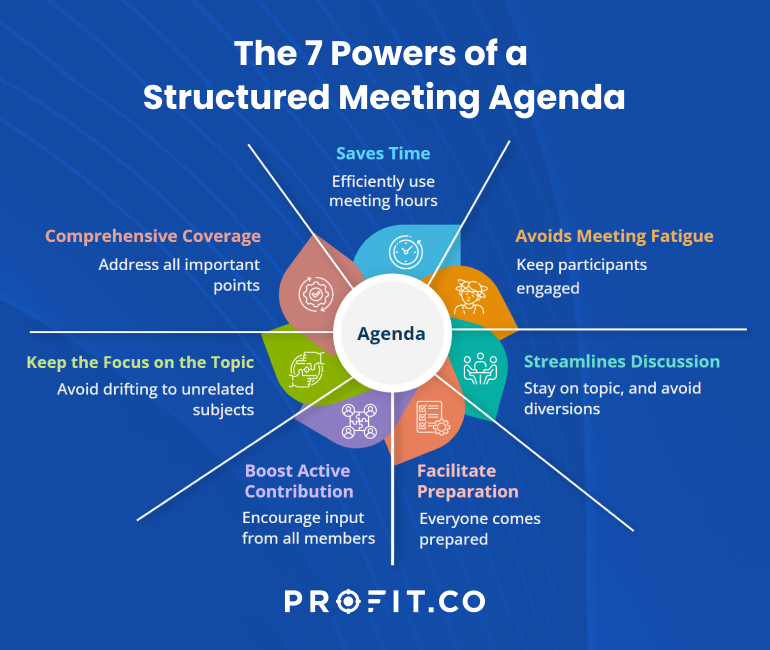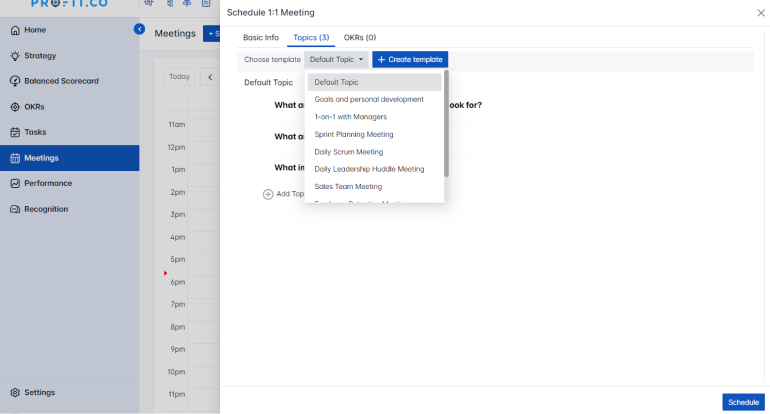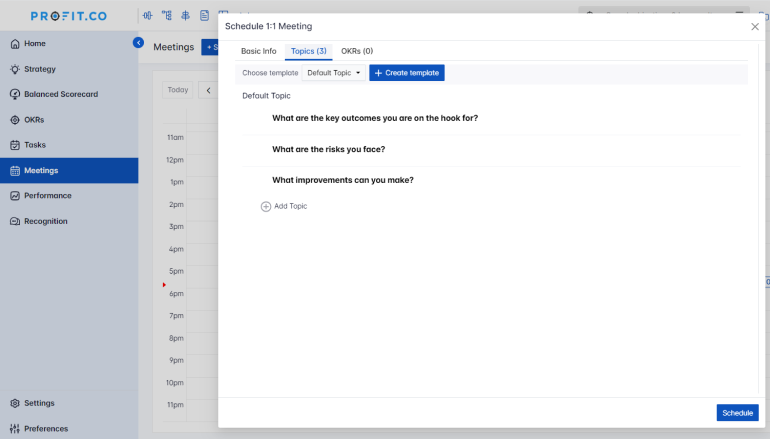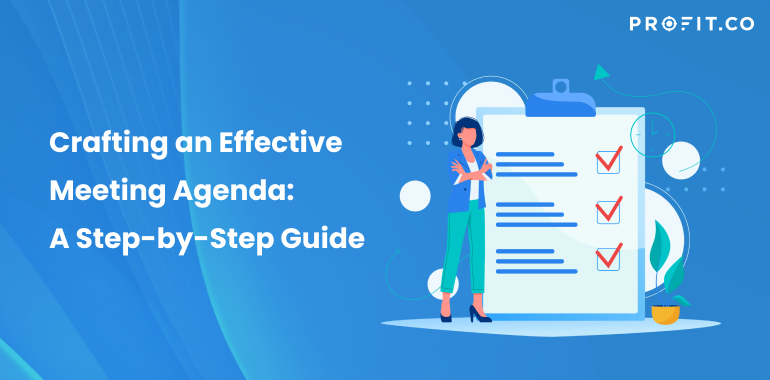Introduction
The metamorphosis of our work environment, characterized by hybrid and flexible modes, has only intensified the age-old challenge of meeting overload. The solution isn’t simply more technology or applications; it’s about the right practices, tools, and behavioral changes. eMeetings of corporate life remain fundamental, often dubbed the bread and butter.
However, like bread past its prime, a meeting can lose its essence without a well-structured agenda. As we move towards 2025, projections indicate that over 65% of global workers prefer joining hybrid meetings digitally from their personal spaces, sidestepping traditional conference rooms. In this evolving landscape, a solid meeting agenda becomes our compass, ensuring meetings are efficient, purposeful, and not just another tick on the calendar.
“You should never go to a meeting or make a telephone call without a clear idea of what you are trying to achieve”
The Importance of Meeting Agendas in Professional Settings
An agenda is more than just an itinerary; it is a pivotal tool ensuring discussions remain relevant and productive. It efficiently minimizes wasted time by ensuring attendees are adequately prepared and aligned.
An agenda provides an overview of the meeting’s structure and objectives for external participants or guest speakers. Importantly, an agenda promotes structured participation, ensuring all stakeholders can contribute meaningfully. While it’s common for meetings to digress occasionally, an agenda aids in redirecting focus to the primary objectives.
Moreover, it guarantees that all vital subjects are addressed. Therefore, as one prepares for corporate deliberations, formulating a comprehensive agenda should be viewed as an imperative. It is instrumental in transforming meetings from mere routine engagements into efficient strategy-formulation sessions.

Benefits of Having a Meeting Agenda
Meetings punctuate our professional lives, but their success often rests on structured planning. Employing a structured agenda basics, whether derived from a sample format or a specific template for staff meetings, presents several advantages:
When applying this principle to a Webinar Marketing Campaign, the role of a structured agenda becomes crystal clear:
Streamlines discussion
Consider this scenario: Your team is allocated a mere 30 minutes to brainstorm promotional tactics. Armed with an agenda, members can swiftly pinpoint creative ideas, identify audience segments, and decide on content distribution methods, all while sidestepping unnecessary diversions.
Facilitates preparedness of participants
When inviting a guest for a meeting on webinars, sharing the agenda in advance allows them to grasp the core objectives. This ensures their contribution aligns seamlessly with the meeting’s overarching discussion points and goals.
Encourages active contribution
With the agenda highlighting a section for “New Marketing Channels,” team members are prompted to take the initiative, introducing innovative strategies such as podcasting.
Stays focused on goals
As the meeting progresses, there might be an inclination to discuss topics for subsequent webinars. The agenda, however, acts as a subtle nudge to concentrate solely on the promotional strategy for the current webinar.
Guarantees comprehensive discussion
As the meeting concludes, it’s evident that the team hasn’t only settled on promotional tools and delineated specific tasks. This ensures that all aspects, from email marketing to social media blasts, have been addressed.
Craft your meeting productivity and task organization with our downloadable Template. Click Here
Tips for Creating an Effective Meeting Agenda
Navigating through a meeting can be challenging, especially when the direction isn’t clear. An effective meeting agenda can be the roadmap that ensures all participants are aligned and the discussion remains focused.
Here are the top five elements to consider when crafting that agenda
Define a clear objective:
Before even delving into what topics will be covered, it’s essential to pinpoint the meeting’s primary goal. What do you hope to achieve? This sets the tone and acts as a guiding light, ensuring discussions are purposeful and outcome-driven.
Organize your agenda into sections
Instead of a scattered list, break the agenda down into logical sections. This could be by department, topic, or project phase. Organizing it this way provides a structured flow and ensures that related items are grouped together for a more streamlined discussion.
Estimate time for each discussion item
Time is a precious resource, especially in the world of business. As highlighted by the Harvard Business Review, an IT manager reported spending 35 hours a week in meetings while juggling emails during 85% of those meetings and interacting with an average of eight different teams daily. Given such dynamics, it’s crucial to set clear expectations about meeting durations. By estimating the time allocated for each agenda item, participants can remain focused, ensuring that no topic dominates the entire session. Moreover, it acts as a courteous nudge, prompting the discussion to advance if it tends to linger on one point for too long.
Seek Input from Participants
The most holistic agendas are crafted collaboratively. Before finalizing the agenda, contact participants for any additional topics or issues they want to address. This fosters inclusivity and ensures diverse viewpoints are considered.
End Each Meeting with a Review
As the meeting draws close, summarize what was discussed, the decisions made, and the next steps. It ensures clarity, assigns responsibility, and is a reference point for follow-up actions.
Now, while these are general guidelines, when we talk about aligning meeting agendas with strategic objectives like OKRs and KRs, it’s pivotal to understand the essence of these terms.
Profit.co’s 1:1 Meeting Module & Meeting Agenda Allow Seamless OKRs and KRs Integration
OKRs, or Objectives and Key Results, provide a framework for setting and communicating organizational goals and results. They prioritize what’s most important, creating clarity, focus, and motivation. KRs, the Key Results, represent the measurable steps to achieve these objectives. In a dynamic and fast-paced business environment, possessing clear objectives that everyone understands and aligns with can mean the difference between success and stagnation.
Profit.co’s 1:1 Meeting module is not merely an advanced tool for creating agendas. It’s about embedding organizational goals into every discussion. By intertwining OKRs and KRs with meeting agendas, this module ensures that every conversation, decision, and action harmonizes with the organization’s overarching objectives.

The benefits of such strategic alignment are manifold. Firstly, it ensures that every team and individual is rowing in the same direction, amplifying the cumulative efforts of the organization. It minimizes wasted efforts on divergent goals and concentrates energy on what truly matters. Meetings become purposeful, decisions are more informed, and the path to success becomes clearer. The resulting synergy can catalyze remarkable growth and innovation when everyone is on the same page.
In essence, if you’re aiming for meetings that aren’t just talking points but powerhouses of strategic alignment and execution, Profit.co’s 1:1 Meeting module, with its niche functionalities, offers the clarity and direction vital for contemporary businesses.

Key Elements of an Effective Meeting Agenda
Meetings should propel decision-making. A structured agenda layout, clear leadership, and actionable outcomes ensure productivity.
- Clear agenda and objective by the agenda creator.
- Define and communicate the primary (and secondary, if necessary) objectives.
- Set the meeting structure beforehand. Use sample agenda formats to speed up.
- Ensure participants know the purpose and desired outcome.
- Invite only essential stakeholders.
- Assign a point person to keep the meeting on track.
- Define which devices are allowed and which aren’t.
- Slides, mock-ups, or specific software might be necessary for some meetings
- Conclude with a list of tasks and assigned responsibilities.
- Checklist
The Checklists can be like
1.What needs to be done?
2.Who is accountable?
3.When will it be done?
- Circulate meeting notes for alignment, especially in hybrid work environments.
- Share notes or recordings post-meeting for wider awareness.
Interested to explore further?
Check out this agenda example for inspiration
Example 1: Product Development Team Meeting/ Staff Meetings
Objective:
Review the current status of the “XYZ” project and discuss modifications based on the recent client feedback.
Meeting Structure:
- Introductions (if any new members are present)
- Overview of the current status
- Client feedback discussion
- Modifications planning
- Q&A
- Action items
Participants:
- Product Manager
- Lead Developer
- UI/UX Designer
- Quality Analyst
- Client Relationship Manager
Devices Allowed:
Laptops for presenting and taking notes. No phones.
Materials Needed:
Slides showing the current design and a list of client feedback.
Actionable Next Steps:
- Incorporate client feedback into the design.
- Set up testing for the new design.
- Plan a client review meeting after modifications.
Running an Effective Meeting
Crafting an agenda is the foundation of an effective meeting, but executing it successfully is where the real value lies. Effective meetings balance structured agendas with an open, respectful dialogue, driving both productivity and team collaboration.
Here’s a guide to running an effective meeting
1. Set the Tone:
Start with a warm welcome and punctuality to set a professional tone. If feasible, offer refreshments as a gesture of hospitality.
2. Lay Out the Agenda:
Begin by quickly reviewing the day’s agenda, emphasizing priorities. Stay committed to the listed topics to maintain the meeting’s focus.
3. Foster an Engaging Environment:
Encourage open discussions, ensuring everyone feels heard. Keep discussions on track and value feedback to keep the momentum.
4. Documentation:
Capture key points and assigned tasks during the meeting. This ensures clarity post-meeting and provides a reference for those absent.
5. Maintain a Respectful Environment:
Active listening is key. Show genuine interest in attendees’ contributions and acknowledge their input to foster collaboration.
6. Conclude Thoughtfully:
Reiterate main decisions, end positively, and set clear expectations for the next meeting.
Making the Most Out of Every Meeting
In the bustling world of business, running a meeting is akin to adopting the OKR methodology – it’s all about iterating faster and focusing on what truly matters. Begin with a crystal-clear agenda, setting the stage like the objective in OKRs. Elicit participation from everyone, treating their insights as the key results that guide progress. As discussions flow, imagine each actionable point as quick iterations, driving the team closer to the goal. Concluding, ensure everyone’s aligned for the next steps, and ready for the next sprint. With this mindset, every meeting isn’t just a talk, but a strategic leap forward.
Conclusion
Crafting an effective meeting agenda is a fundamental step toward productive meetings. In our fast-paced business environment, clarity and alignment are essential, and an agenda lays the groundwork for both. With Profit.co’s 1:1 meeting module, you don’t have to start from scratch. It provides ready-to-use meeting agenda templates tailored for today’s businesses, streamlining the process and ensuring that every discussion is aligned with organizational goals. Don’t leave your meetings to chance; equip them with the structure they need.
Profit.co’s offerings today and take your meeting efficiency to the next level.
Related Articles
-
The Ultimate Guide to Creating Action Items for Effective Results
Elevate your meeting productivity and task organization with our downloadable Action Items Template. Click Here Introduction What separates a seamlessly... Read more
-
How to Increase Your Productivity with No Meeting Day?
Introduction The contemporary workspace is a hotbed of constant distractions: incessant meetings, casual hallway chats, quick coffee breaks, phone buzzes,... Read more

